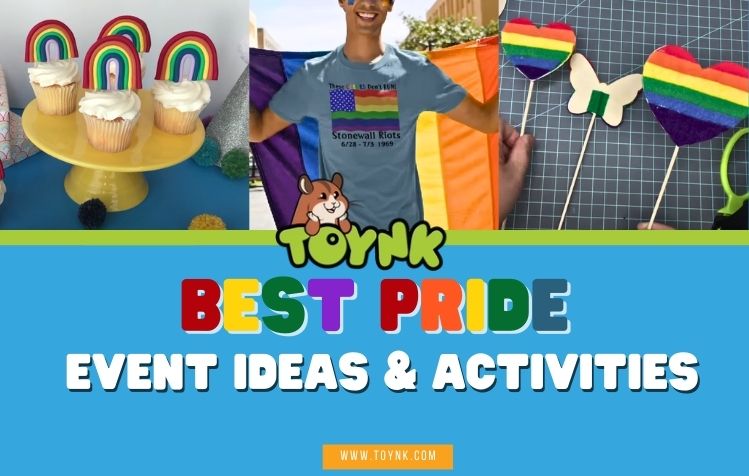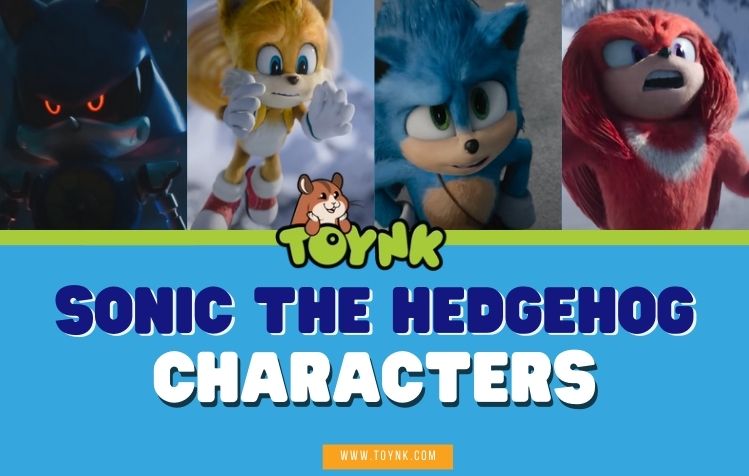Making stuffed animals from scratch can be a lot of fun, but a lot of thought definitely goes into the process — the most important of which is choosing the best fabric for the job.
Well, you’re in luck — we’ve taken the guesswork out of choosing the best fabric for plushies, so you don’t have to!
Shop The Plush Toys Collection Now
Top 8 Fabrics for Plushies
1. Felt

Felt is one of the most versatile fabrics, so it makes sense that it’s our number one fabric for plushies. It’s extremely light and has no grain, meaning you don’t have to be a master seamstress to be able to work with it. Its flexibility in detailing makes it the best choice for hand-sewn plushie projects if you’re not too comfortable with a sewing machine.
The only downside is that it lacks stretch, so it can be unforgiving when you make mistakes. The stuffed animal also won’t look that “fluffy.”
2. Fleece

Like felt, fleece is also a great option for beginners in DIY plushie projects. This fabric is soft and has just the right amount of stretch (perfect for squishy plush toys!), yet it can still hold its shape. It’s also available in a wide range of colors and patterns.
3. Faux Suede

Faux suede is perfect if you want a stuffed animal that’s not too fuzzy yet still extremely soft. However, you do want to take note to get “faux” suede instead of real suede, as real suede is technically leather and won’t be good for plush toys at all!
Faux suede is also not that stretchy, so it can be challenging to work with, especially if you’re a beginner. But we have to say it’s worth it to be able to make plush toys from faux suede!
4. Cotton

Cotton is a popular fabric for stuffed animals, but you don't see it being used that much anymore, mainly because it’s not that soft and squishy. If you choose to work with this type of fabric, you will need a lot of stuffing to ensure that the seams don’t pucker.
Here’s a tip: you don’t have to be limited to using cotton alone. Today, many companies opt to use this fabric as accents in their plush toys.
Shop The Plush Toys Collection Now
5. Faux Fur

Faux fur is a bit expensive and difficult to work with, especially if you are a beginner at making stuffed toys. You will also rarely find stuffed animals made entirely from faux fur; usually, it is used for accents like long hair.
To work with faux fur, you must cut and sew through the back only to avoid wasting fur.
6. Minky

Most stuffed animals available today are made from minky fabric — it’s extremely smooth yet still stretchy and structured. You’ll be able to create beautifully rounded stuffed animals with this versatile material, even as a beginner.
That being said, minky can be expensive, and the colors and prints can be limited. This fabric type also has a “right” side — meaning you’d have to sew following the grain.
7. Polyester

While polyester is more suitable for stuffing, it’s also a great fabric for stuffed animals. It has great color retention, so you can expect that your stuffed toy will stay vibrant over the years. The fibers are stain-resistant.
Polyester is available in blends, so no two fabrics will have the same look and feel.
8. Flannel

Flannel doesn’t have a lot of stretch, but it’s more forgiving than cotton. This type of fabric is made from natural polyester blends, with many different styles and patterns available on the market.
On the downside, flannel isn’t the most durable fabric for plushies — it frays easily and will pill over time.
Read: What's the Best FNAF Plushie?
Ultimate Buying Guide
Customization & Flexibility
The best thing about creating your own plushie from scratch is the freedom and flexibility in customization. Get creative — from picking the fabric, choosing accents, and incorporating accessories, like the safety eyes and noses! Making toys from scratch can be time-consuming, but the final result is something to be proud of.
Fabric Type

Ultimately, the choice of which fabric to go with is yours. Do you want something that’s structured yet soft? How about the texture and its final squishiness?
Ease of Cleaning
Of course, you can’t expect the toy's quality to look as good as the first day you’ve made it. Or perhaps you’re giving the toy project to small children, and you’d like to make sure that they are washable and hypoallergenic. [1]
All fabrics made with natural materials can easily be cleaned for stains and dirt, so it’s better to go this route. Learn how to wash plushies here.
Durability

It’s no secret that tightly woven fabrics will stand the test of time better, so you want to opt for this type of material for your craft plushies for better quality. It’s no fun for children (and adults alike!) to play with a worn-out toy.
Softness
Plushies should be soft and squishy. Before you commit to using a type of fabric, ask the local fabric shop for some swatches so you can have an idea of their textures and feels.
For softness alone, we definitely recommend going with fleece or minky!
Price Point

Everything still boils down to the price point you’re comfortable with. Are you okay with investing a lot of money in your DIY plushie, as it will serve as a sentimental memento? Or would you rather go for the more economical route and spend your hard-earned money somewhere else?
Whichever you choose to go with is ultimately up to you. After all, plenty of fabrics are available that are extremely inexpensive yet still durable!
Practical Considerations for Plushie Fabrics
- Washability: Plushies made from fleece or cotton blends are easier to clean, while faux fur may require spot cleaning.
- Pet-Friendly Fabrics: If plushies are for pets, durable and non-shedding fabrics like microfiber fleece are ideal.
- Color Retention: Synthetic fabrics like polyester fleece hold color better than natural fibers, preventing fading over time.
- Eco-Friendly Options: Bamboo fleece and organic cotton offer sustainable alternatives for plushie-making.
FAQs
Can you use any fabric for plushies?
You can choose any fabric we’ve listed above for plushies. Choosing a fabric ultimately depends on the final texture and feel of your soft toys and your comfortability and expertise in handling the said fabric.
What fabric is soft and fluffy?
Fleece and minky are just a few fabrics for soft and fluffy plushies! Both fabrics are also fairly easy to work with, especially if you’re starting to make stuffed animals.
In Conclusion
That concludes our round-up of the best fabric for plushies!
We loved working with felt, especially for small, hand-sewn plushie trinkets. The fabric has no grain, so you can definitely sew in whichever way, and the plushie would still turn out well.
A close contender is faux suede and minky, both soft and fluffy, but can be more tricky to work with for beginners.
All in all, to determine the best kind of fabric, you have to consider its durability, softness, and price point before you make any final decisions.
Making your own craft plushies can be time-consuming, but the result is worth it!
If you're looking for plush toys, make sure to check Toynk!
Shop The Plush Toys Collection Now
Reference:
- https://www.healthline.com/health/allergies/hypoallergenic



